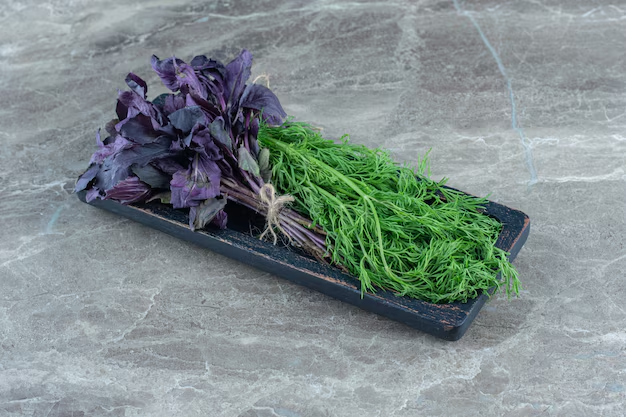Keeping Your Cilantro Fresh: A Comprehensive Guide to Refrigeration Success 🌿
Cilantro is a delightful herb that brings a burst of freshness and vibrant flavor to countless dishes. But if you've ever found yourself tossing a wilted bunch into the trash, you know keeping cilantro fresh can be a daunting task. Fear not! With some simple strategies, you can extend the life of your cilantro and enjoy its leafy goodness for longer. Let’s delve into the techniques available, ensuring you always have that fresh sprig on hand when you need it.
Importance of Proper Cilantro Storage
Before diving into methods, let’s understand why proper storage matters. Cilantro is a delicate herb with high water content, making it prone to wilting and spoilage. By using the right storage techniques, you can preserve its nutritional quality, flavor, and appearance. Plus, proper storage helps reduce waste, saving you time and money on frequent grocery trips.
Preparing Cilantro for Refrigeration
Cleaning Your Cilantro
First things first: always clean your cilantro before storage. Washing removes dirt, bacteria, and pesticide residues. Follow these steps for optimal results:
- Rinse Under Cool Water: Use cool, running water to gently rinse the leaves and stems. This helps remove surface impurities.
- Dry Thoroughly: Excess moisture can lead to spoilage, so it's crucial to dry your cilantro completely. Use a salad spinner or pat dry with a clean kitchen towel.
Trimming the Stems
Trimming the ends of the stems before storage ensures they’re fresh and capable of drawing up water when needed. Use a sharp knife or kitchen scissors for clean cuts.
Best Methods to Keep Cilantro Fresh
Now that your cilantro is prepped, let's explore some tried-and-true storage strategies:
Mason Jar Method
The Mason jar method mimics a vase of flowers, offering the cilantro access to water.
- Fill a Jar with Water: Fill a clean Mason jar or similar container with about an inch of water.
- Place Cilantro in Jar: Stand the cilantro stems in the water, ensuring the leaves stay above the waterline.
- Cover and Refrigerate: Cover the jar loosely with a plastic bag to protect the leaves. Secure the bag with a rubber band, then place it in the refrigerator.
Paper Towel Technique
This method focuses on moisture control.
- Wrap in a Damp Paper Towel: Lay cilantro on a damp paper towel, rolling it up gently.
- Seal in a Plastic Bag: Place the wrapped cilantro in a resealable plastic bag or airtight container.
Herb Storage Containers
Specialized herb storage containers maintain optimal humidity levels for herbs. These containers are available in various sizes and provide an easy, no-fuss solution.
Enhancing Longevity with Additional Tips
Regular Maintenance
- Change Water Frequently: If using the Mason jar method, change the water every few days to keep it fresh.
- Inspect and Remove: Regularly check for wilted or discolored leaves and remove them to prevent spoiling the rest.
Temperature Preferences
Cilantro prefers cooler environments, so store it in the crisper drawer of your refrigerator, where temperature and humidity are well-regulated.
Avoiding Ethylene Gas
Some fruits and vegetables emit ethylene gas, which speeds up the spoilage of cilantro. Store cilantro separately from ethylene producers like apples, bananas, and tomatoes.
Summarizing Freshness Tips 🌿💡
Here’s a quick-reference list of the best practices to keep your cilantro fresh and vibrant:
- Clean and dry thoroughly before storage to remove impurities and excess moisture.
- Trim stems before storage to keep them fresh and capable of drawing water.
- Choose a storage method that fits your needs: Mason jar, paper towel, or herb container.
- Store in the crisper drawer for optimal temperature and humidity.
- Avoid ethylene-emitting produce to delay spoilage.
- Maintain regularly by changing water and inspecting for spoiled leaves.
Related Insights into Herb Storage
Why Not All Herbs Are Alike
While cilantro thrives with specific methods, it's interesting to note how other herbs may require different treatments. Woody herbs like rosemary or thyme can stand being stored wrapped in paper towels without water, indicating that each herb's structure affects its ideal storage.
Relevance to Home Gardening
If you grow your own cilantro, these strategies are equally important. Homegrown cilantro, once harvested, should be treated with the same care as store-bought, ensuring the fruits of your labor aren't wasted.
Extending Beyond Refrigeration
For times when long-term storage is necessary, consider freezing or drying cilantro to maintain its availability year-round. These techniques, although they may alter the texture, preserve the herbs' flavor for cooking purposes.
Composting Waste for Sustainability
If cilantro does wilt beyond salvation, consider composting the remnants. This eco-friendly practice not only reduces kitchen waste but also enriches soil, perfect for nourishing future cilantro plants.
In conclusion, keeping cilantro fresh in your refrigerator isn't just about preserving an ingredient; it's about enhancing your culinary adventures. By adopting these strategies, you're not only extending the life of your herbs but also reducing waste and ensuring every meal benefits from cilantro's bold, herby flavor. Happy cooking! 🍽️
